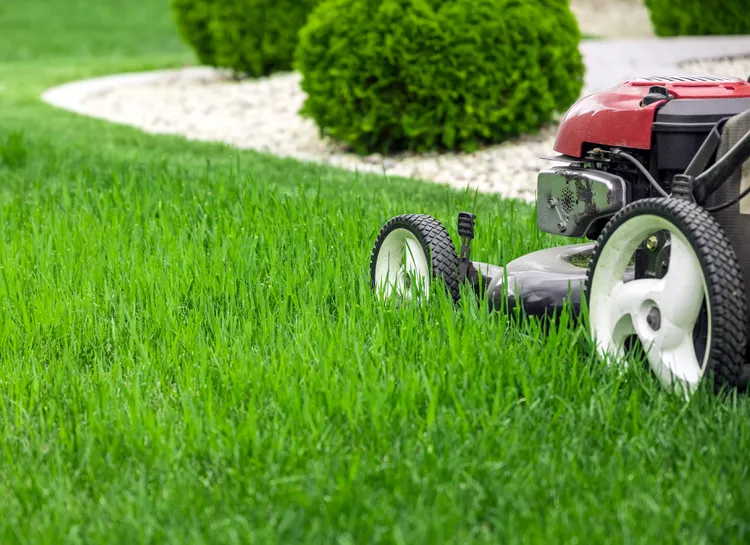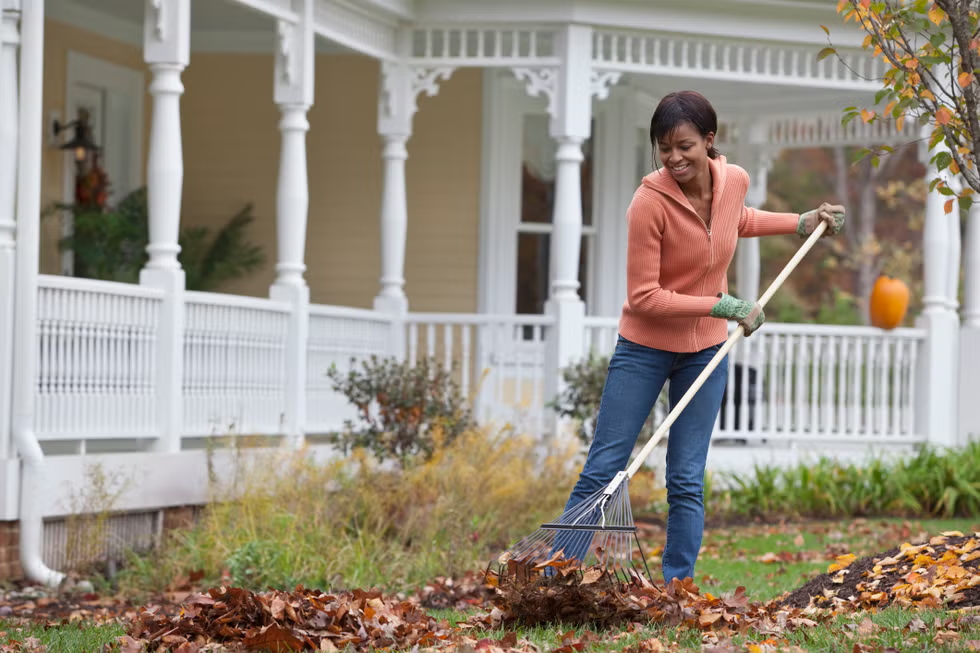When To Add Lime To Lawn
Last Updated on May 16, 2022 by Duncan
Since you are looking for information on when to add lime to your lawn, you know the benefits lime gives to your lawn. It raises the soil pH making the soil less acidic and more alkaline.
As a result, the nutrients necessary for a healthy lawn (nitrogen, potassium, phosphorus, and calcium) are more available to your grass, so your grass grows green and healthier.
Always test the soil before adding lime.
Before you add any lime to your yard, first submit your soil sample to your local county extension service provider for testing.
The results you will receive from the testing facility will tell you the amount of lime you need to add to your soil, depending on your soil type and pH.
When to add lime to a lawn
The best time to apply lime to your lawn is in fall and spring.
Fall is the best time to do it as the rain, snow, freezing, and thawing cycles at this time help lime to break down and begin raising the soil pH.
During the application, take note of the soil test report’s instructions as the amount of lime you need depends on your soil type.
Lime can take months after application to break down and raise your pH to significant levels, so don’t expect instant results.
Lime comes in 40-50 pound bags. The frequency you apply it to your lawn depends on the condition of your soil.
This is why it’s recommended you take frequent soil tests (every 1-2 years), so you know the right time to apply lime.
Different soil types have different lime application challenges. For example, lime runs through sandy soil too fast, especially during heavy rainfall seasons.
At the same time, lime doesn’t mix quickly enough with clay-based soils.
To help the lime blend properly with your soil, consider improving the soil texture using chopped pine bark, finished compost, or aged manure before applying lime.
When to apply lime to the lawn in northeast
If you live in Maryland, Maine, Delaware, Rhode Island, Connecticut, Vermont, New Hampshire, New York, and other states in the northeast, you have cold-season grasses (fescues, ryegrass, bluegrass, and Kentucky).
These grasses prefer a slightly higher or more alkaline pH, so you may need to apply more lime to it.
Like in the other parts of the United States, apply lime in fall and spring. As mentioned above, fall is the best time to do it as the rain, snow, freezing, and thawing cycles help lime to break down and begin raising the soil pH.
Like with warm-season grasses, you need to undertake a soil test, then go ahead and apply lime.
What makes good lime?
For us to know the best lime to go for, we need to understand what lime is.
Lime is a soil amendment made from a limestone rock that contains magnesium carbonate and calcium carbonate.
Limestone can be derived from dolomitic or calcitic lime.
Calcitic lime has plant benefits, so it’s best to go for. There are plenty of calcitic lime products in the market, such as pulverized, agricultural ground, and pelletized limestone.
While pelletized and pulverized limestone is quick at changing the soil pH, avoid pulverized limestone as it’s too dusty. Go with pelletized limestone instead.
When making the purchase, remember that the liming materials aren’t pure calcium carbonate, so don’t look for this. Instead, look for “calcium carbonate equivalent” on the bag label.
Can you apply lime and fertilizer at the same time?
The reason you are applying lime is that your pH is too low (below 6.0). Even if you apply fertilizer, nitrogen and other nutrients won’t be available for the grass, with the pH still low.
To answer your question, no, you shouldn’t apply lime and fertilizer at the same time.
The right way to go about it is to apply lime, then after the pH has gone up a little bit, apply fertilizer, and the necessary nutrients will now be available for your grass.
How to tell if your lawn needs lime
There are several signs you can look out for to tell if your lawn needs lime. These signs include:
- Your lawn is turning yellow instead of green.
- Soil tests reveal that your soil pH level is low (less than 6).
- Your lawn has become too weedy.
- You have applied fertilizer, and it doesn’t seem to work.
How to add lime to lawn
For best results, apply lime to a dry lawn. Never apply it to a dormant, wilted, or stressed lawn.
Lime is more effective at raising the pH when mixed with the top 5 inches of soil, making it easier to adjust the soil pH before planting grass seed or laying sod than adding lime to an established lawn.
If adding lime to an established lawn, first aerate it with a core aerator. This is to open up space for lime to move into the soil.
Don’t use spiked shoes for aeration, as the spike will compact the soil even further.
It’s always wise to double aerate your lawn, so the new grass develops in a nice pattern. Avoid single aeration as it results in small tufts of grass.
You should then use a rotary or drop spreader to apply lime to your lawn. Don’t lay lime by hand as you won’t get ideal results.
You are also more likely to apply more than necessary.
When using the spreader, apply half of the lime when walking in one direction then the other half in a direction perpendicular to the first.
This way, you ensure you apply lime to every part of your lawn.
The amount of lime you apply depends on the results of your soil test. If your results call for less than 50 pounds of lime per 1000 square feet, you can apply all the lime in one application either in spring or fall.
If your pH results are too low and you need between 50 and 100 pounds of lime, apply half in spring and half in fall.
If you need to add more than 100 pounds of lime, apply 50 pounds in spring, 50 pounds in fall, then the rest the following spring until you reach your desired soil pH.
You should never add more than 50 pounds of lime per 1000 square feet in a single application as you might raise the pH too much to the extent the soil becomes unhealthy for your grass.
After applying lime, water your lawn to rinse the extra lime off the grass blades, which comes in handy at preventing leaf burn.
Maintaining your soil pH.
After applying lime to your lawn, allow it to work for several months, then undertake a soil test. For example, if you applied lime in the spring, test your soil in the fall.
If the soil is still too acidic, apply more lime depending on the soil test’s recommendation.
If the soil pH is where it should be, you don’t need to do anything. In the future, test your soil pH every 1-2 years and apply lime if necessary.
Tip: Never apply lime before testing your soil


